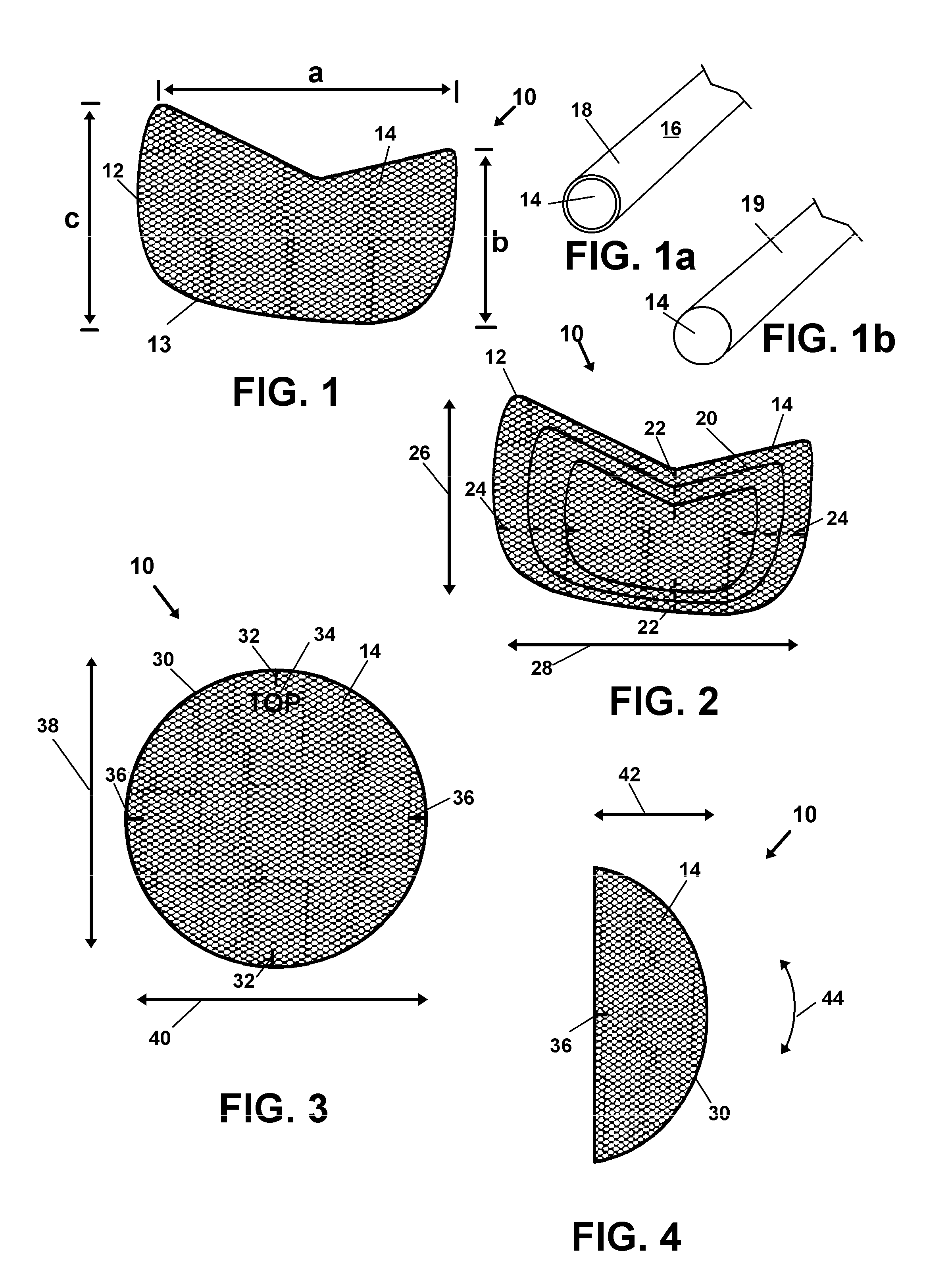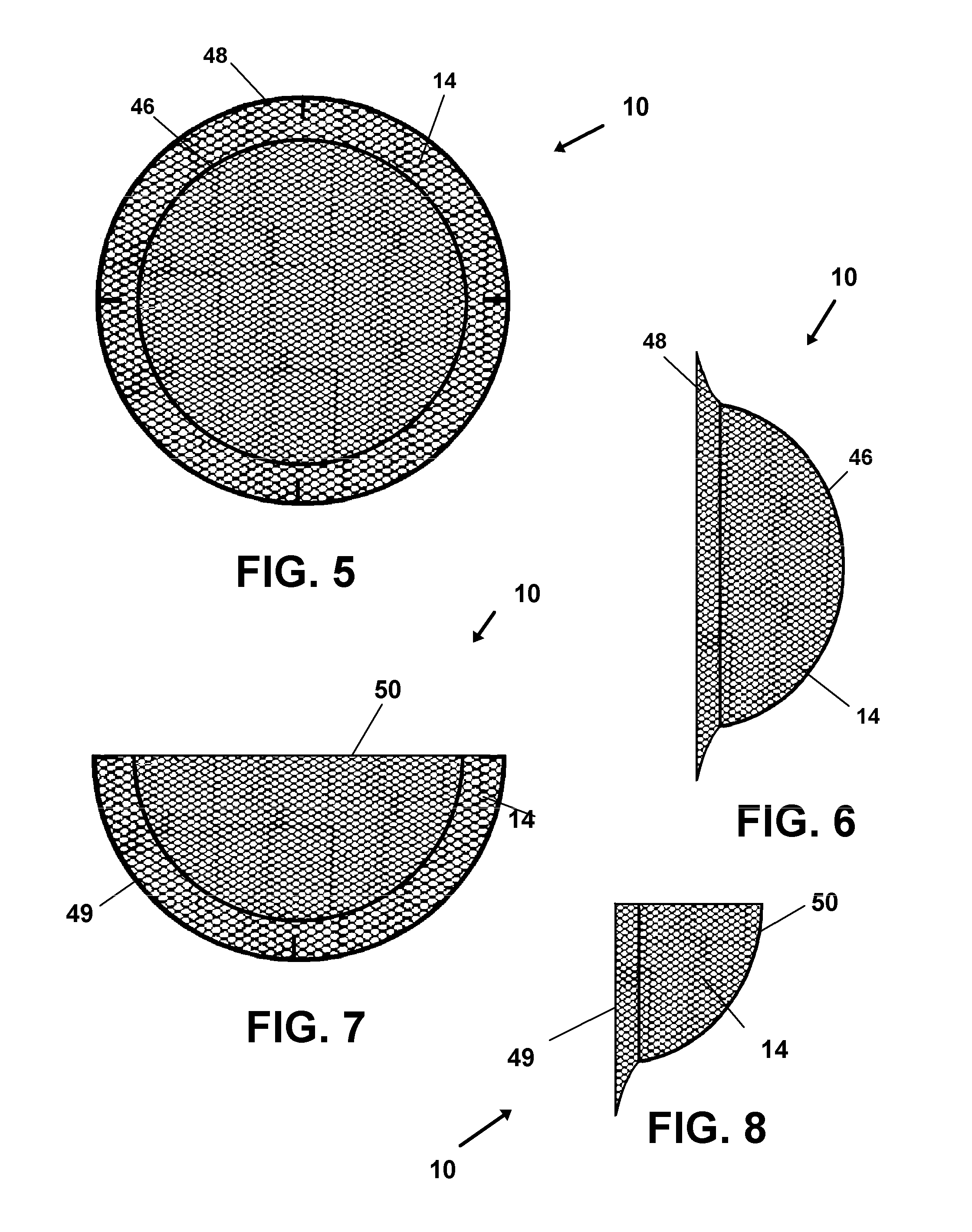However, since initial removal of tissue from the
abdomen is required, the procedure is
time consuming, requires multiple surgeons and surgical sites, and may require long
convalescence.
In addition, the abdominal
muscle may stay weakened and may further suffer from incisional hernias in the
abdomen, thereby further prolonging
recovery.
However, this technique still suffers from some of the downfalls of the TRAM technique, including but not limited to, large amount of operating room and surgeon time, multiple surgeons, and surgical
scars on multiple parts of the patients body.
However, this technique again generally involves multiple surgeries and surgeons and is a
time consuming surgery with a long post-operation
recovery.
Further, the removal of
muscle tissue may result in the
back muscle being weakened which can cause long term pain for the recovering patient.
In addition, large
scars will remain on the back and breast area.
While these and other techniques endeavor to minimize rejection issues by employing the patient's own
body tissue for supporting existing
breast tissue, or implanted prosthetics, this positive goal is generally negated by the fact that multiple surgeries and surgeons are required, and the fact that the patient has multiple incision sites and lost remote tissue that must heal and can become infected and painful.
Unfortunately, the conventional woven mesh materials used today make no provision for accommodating stretch in one or both directions on a controlled basis.
Because of this inability to customize elasticity and stretch to the mesh, these conventional devices may fail in providing adequate support and comfort in the natural movement and feel of the breast which for each human is of a custom dimension and area.
This poor fit and lack of elasticity to allow for form fitting of the breast, may result in additional surgeries to correct such inconsistences.
In addition, as has been discovered recently from long term implants, due to body reactions to some
synthetic materials used for weaving such mesh devices, the mesh can be rejected by the patient's body even years after implantation.
This rejection either evidenced immediately or over a term of years, can also be the causation of infection, damage to tissue, and again the need for subsequent surgeries to remove or replace the mesh device.
As such, surgeons in the operating room, must take valuable time and
cut the
woven fabric sheet in the operating room during the procedure.
As such, this need for
cutting woven mesh fabric, frequently results in uneven or miss-
cut sheets of woven mesh which are then implanted and must be forcefully stretched or manipulated into a “fitted” engagement to the breast of the patient.
This results in an improper fit around the curved area of the
breast tissue in the vertical direction which can be painful amongst other problems noted herein.
However, as a consequence of the lack of customized implant fabric sheets, which are knitted or woven and pre-cut to fit breast tissue, and the lack of predetermined stretch and support in both directions of supported breast tissue, can adversely effect the finished shape and feel of the reconstructed breast tissue.
As such, patients will frequently suffer from discomfort from the material compressing the breast tissue, or from a distaste for the visual aspects of the finished surgery.
Such patients will often require further surgeries to correct any inconsistences with the mesh, or such patients may just unfortunately live with the uncomfortable current state of the reconstruction as well as the now known problems with fabric mesh rejection and infection.
Some well known problems with conventional
surgical mesh devices include high overall weight and stiffness and lack of three dimensional elasticity which is inherent to the typically rectangular woven mesh sheets.
Further such mesh sheets used abdominally also have been found most recently to lack
biocompatibility between the
synthetic materials forming the sheets and contacting surrounding
body tissue, thereby causing inflamation and in some cases illness and rejection.
When such
surgical mesh is employed with breast
reconstructive surgery, as noted, the stiffness and weave of such conventional mesh in one or both directions, can seriously inhibit the natural look, movement, and feel of the breast tissue and such is undesirable.
Further, stiff or inelastic materials formed into woven structures can prove more difficult to
handle by the physician during implantation due to the need to customize the planar non elastic sheet, to fit the curved
three dimensional shape of a breast.
Such misfitting sheets customized in the operating room frequently require suturing or stapling to maintain their position in the body.
As also noted, bio-compatibility and the possibility of the body's rejection of a fabric implant is a continuing problem with nearly all implant devices and most recently has been shown to be a particularly acute problem with
woven fabric mesh.
This lack of compatibility has been shown to be caused by the material forming the threads or
yarn of the woven material.
However, even such conventional thought to be bio-compatible synthetics, are still known to be subject to blood
clot formation, infection, allergic reactions and more, and have been shown to be never completely bio-compatible.
In addition, when employing such known bio-compatible synthetic or natural materials for forming into the
yarn, fine fibers or filament strands which is then woven as needed, it has been found the strands in the weave may become brittle when formed into monofilament strands, and may incur some problems with stiffness and breakage.
If this
woven fabric is cut on a
diagonal line to the perpendicular woven threads, unraveling is particularly acute, and the fabric on the
diagonal will over stretch under tugging force.
Various limitations of the related art will become apparent to those skilled in the art upon a reading and understanding of the specification below and the accompanying drawings.
 Login to View More
Login to View More  Login to View More
Login to View More 


